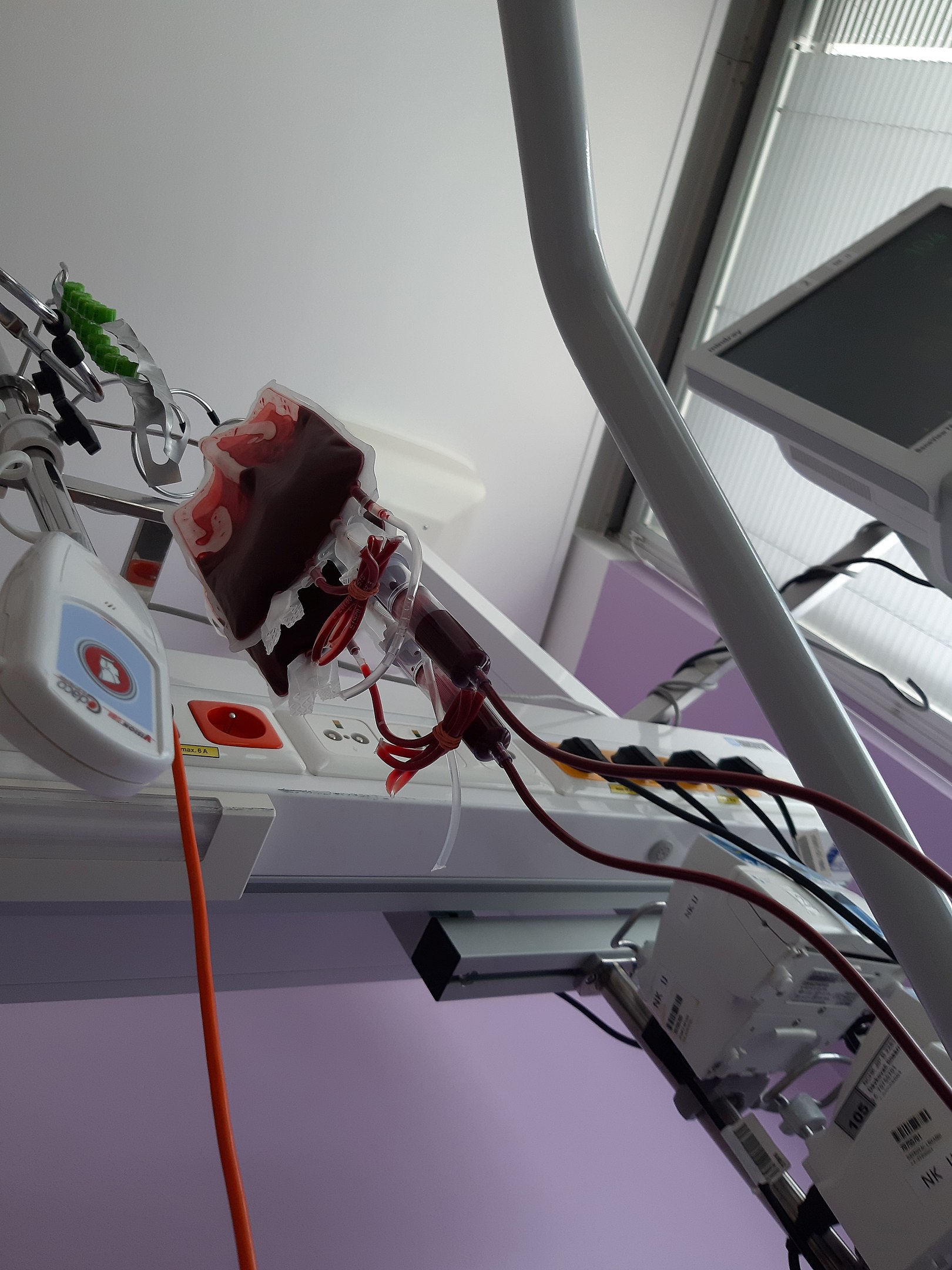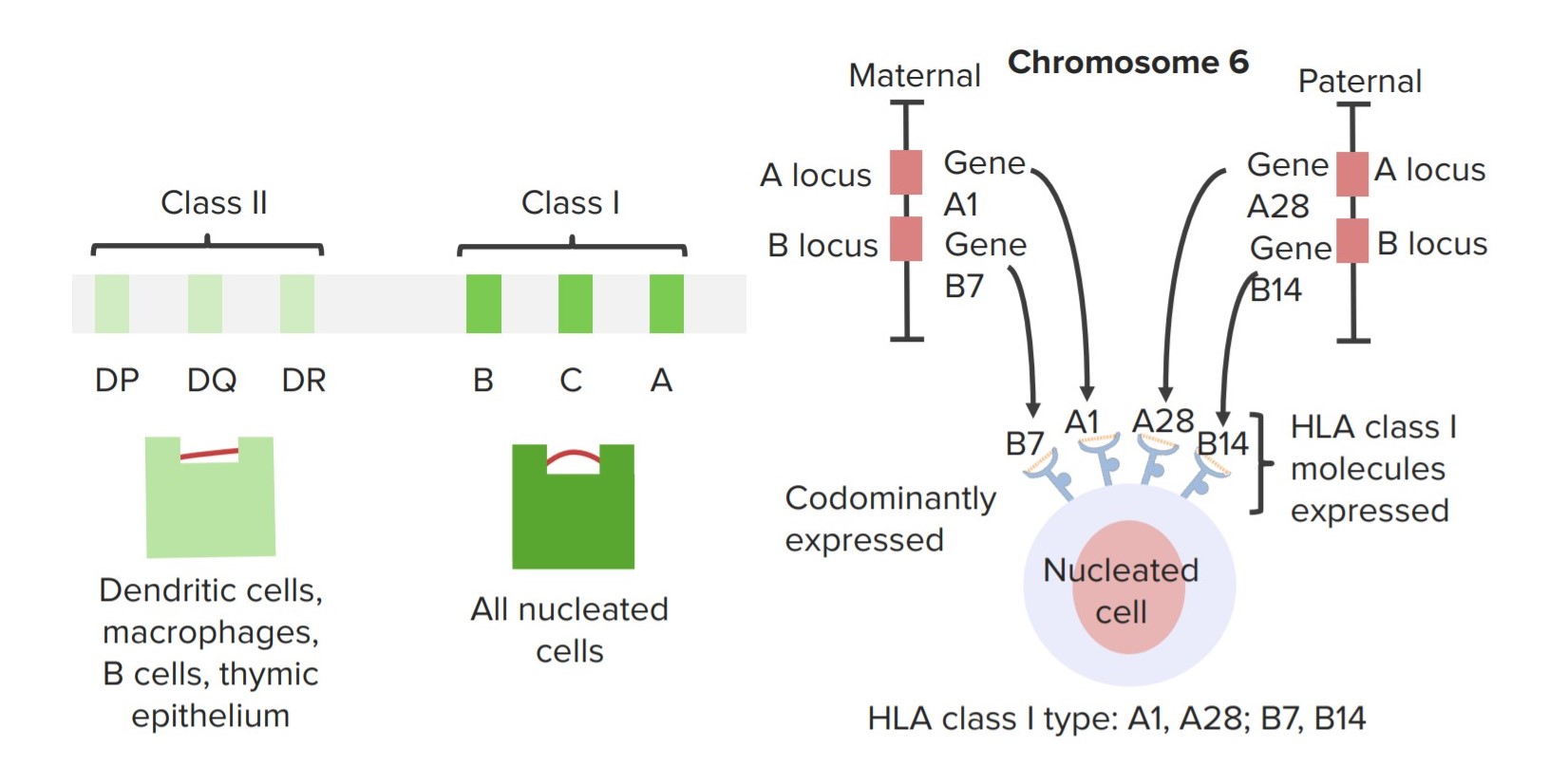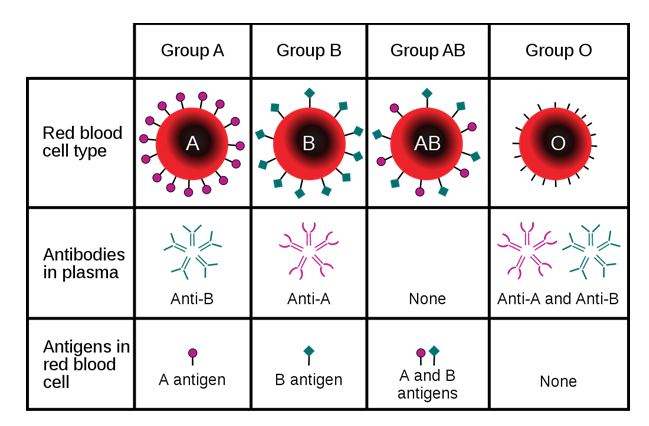Playlist
Show Playlist
Hide Playlist
Allograft Rejection and Blood Transfusion
-
14 Slides Transplantation Immunology.pdf
-
Download Lecture Overview
00:01 There is a terminology that is used in transplantation that refers to first set or second set rejection. 00:10 Essentially, this is a specific term used in transplantation to denote a primary or a secondary adaptive immune response. 00:21 In the example shown, you can see a strain A mouse that is being used as a donor for a skin graft onto a strain B mouse. 00:33 After three to seven days, this graft will still be present on the recipient. 00:41 There will be no evidence at that point of time of immunological rejection. 00:48 However, that does not mean that this graft isn’t being recognized as foreign. 00:53 Because if we leave the recipient mouse for a few days longer, we will see that around about day 7-14, the graft is rejected. 01:05 And this is referred to as first set rejection. 01:11 Looking now in the center of the diagram, again a strain A donor mouse and a strain B recipient mouse. 01:21 However, if the recipient, the strain B mouse is sensitized by previous graft from a strain A donor, then we see a much more rapid rejection; what in transplantation terminology is referred to as the second set rejection. 01:40 This is because immunological memory has been generated. 01:44 And a much faster and stronger secondary immune response is being generated. 01:50 Looking at the right side of the diagram now, we again have a strain A donor mouse and a strain B recipient mouse. 01:59 But the recipient strain B is injected with lymphocytes from another strain B animal that has previously rejected a strain A graft. 02:09 In other words we are transferring memory lymphocytes into this mouse. 02:14 Therefore when transplanted, there will be a second set rejection, the faster stronger secondary type immune response. 02:23 Looking at the time course of rejection in patients receiving a transplant, we can identify four different phases of rejection. 02:33 Hyperacute rejection which occurs in minutes, is due to the pre-existence of anti-donor antibodies and complement activation. This is incredibly rare to see these days because cross-matching between the donor and the recipient and checking for the presence of antibodies against the donor cells means that this is not a situation that one would normally come across. 03:02 Accelerated acute rejection occurs one to five days following transplantation, and is due to pre-existing anti-donor T-cells. 03:13 Again, this is very rarely seen these days because of the procedures that are done to minimize this happening. 03:20 Acute rejection occurs within weeks, and is due to the activation of naïve T-cells. 03:28 Most commonly seen is chronic rejection, which occurs months or years following the transplant. 03:36 And there are a variety of mechanisms that cause this. 03:40 It’s often rather unclear exactly what is involved in this rejection process. 03:45 But it can involve antibodies, it can involve immune complexes, can involve T-cells. 03:51 Or it may simply be a recurrence of the disease. 03:54 If somebody needed a heart transplant because of something metabolic going wrong in their body, that’s not changed by having a new heart put into them. 04:02 And that process that caused them to need a transplant in the first place may reoccur, affecting the transplanted organ. In front of you, you can see the number of transplants performed in the United States of America in 2015. Of course blood transfusion is the most common type of transplant where cross-matching needs to be carried out. Skin transplantation is very often an autologous transplant, where skin is taken from one area of the body and transferred to another area of the body in the same individual. For example, in a patient with burns. 04:44 Corneal transplants are unusual, in that there is no need to cross-match. 04:50 Even though the cornea is coming from a different individual, the cornea generally is not vascularised. 04:58 So immune system cells can’t actually mediate a rejection process. 05:04 Hematopoietic stem cells can be isolated from bone marrow, from peripheral blood or from cord blood. 05:12 And again, very often these transplants are autologous transplants. 05:18 For example, in patients with leukemias that are being treated with radiation and cytotoxic drugs, you need to replenish their immune system cells that are damaged by those treatments. 05:29 And then you can read down the rest of this and this gives you some idea of the most common types of transplant that occur. 05:38 This is a graph just to give you an indication of the number of individuals in the USA with functioning organ grafts. And as you can see, transplantation is now almost a routine procedure for many types of transplants. And many people are living successfully with transplants. And the numbers are increasing year on year. However graft rejection remains a continuing problem. Here you can see a number of different types of transplant, and that over the time course of a number of years, the graft survival rate decreases.
About the Lecture
The lecture Allograft Rejection and Blood Transfusion by Peter Delves, PhD is from the course Transplantation Immunology. It contains the following chapters:
- Allograft Rejection
- A Closer Look on Blood Transfusion
Included Quiz Questions
Which of the following organ transplants has the shortest graft survival rate?
- Heart and lungs
- Liver
- Cornea
- Kidney
- Pancreas
A second set rejection is characterized by all of the EXCEPT which of the following?
- Has a period of latency before rejection
- Occurs after a first set rejection
- Occurs after sensitization with lymphocytes from a previously sensitized mouse
- Is stronger than first set rejection
- Requires immunological memory
A humoral immune response is the main cause of rejection in which of the following types of transplant rejections?
- Hyperacute
- Accelerated
- Acute
- Chronic
- Humoral response does not cause rejection
Which type of allotransplantation does not require cross matching?
- Cornea
- Lung
- Skin
- Hematopoietic stem cells
- Liver
Customer reviews
5,0 of 5 stars
| 5 Stars |
|
5 |
| 4 Stars |
|
0 |
| 3 Stars |
|
0 |
| 2 Stars |
|
0 |
| 1 Star |
|
0 |







